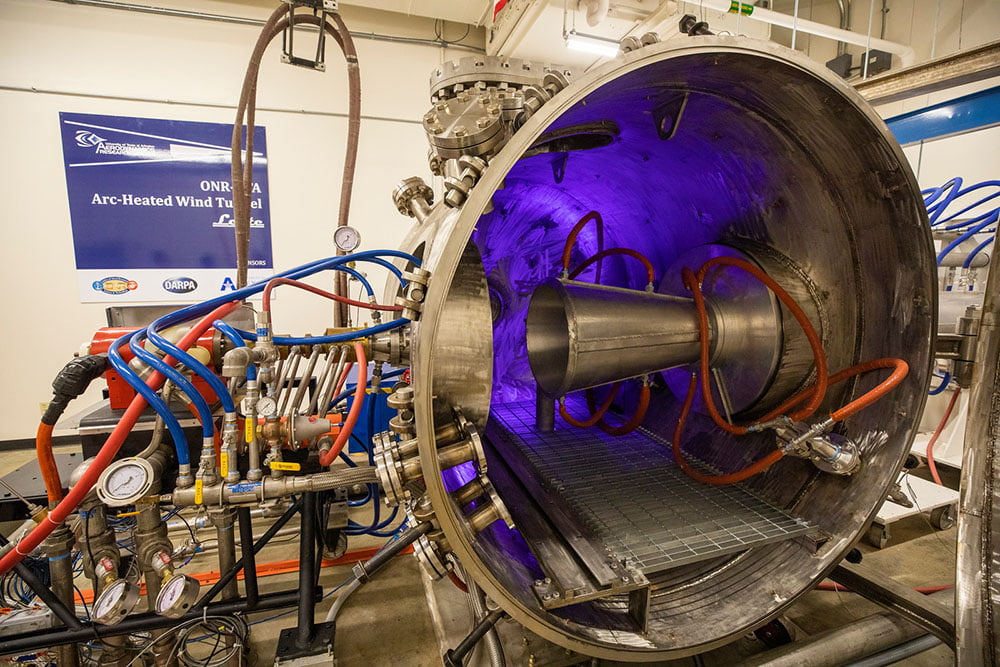Reliable sensors for hypersonic flight

Harsh environmental conditions—such as surface temperatures reaching thousands of degrees Fahrenheit—make it challenging to accurately measure temperatures and heat flux on hypersonic flight systems.
But a mechanical engineering associate professor at The University of Texas at Arlington believes a new additive manufacturing technology can withstand those conditions and may be used to provide reliable measurements.
With help from a Small Business Innovation Research grant from the Department of Defense, Panos Shiakolas is exploring ceramic and other non-metallic materials to fabricate novel advanced temperature and heat flux sensors.

Shiakolas is working with Luca Maddalena, a professor of aerospace engineering at UTA and an expert in hypersonic aerothermodynamics. Maddalena is also director of UTA’s Aerodynamics Research Center and recently brought online a new arc-jet heated hypersonic wind tunnel that is the only one of its kind at a university in the United States.
Heat flux and temperature sensors are used extensively in testing and evaluating hypersonic applications in high-temperature environments. Their performance must be uniform, accurate and consistent, but traditional manufacturing requires lots of human skill and dexterity. The hope is that this new additive manufacturing concept will overcome these limitations.
“We have been working to develop sensors, analyze the manufacturing process and identify the type of non-metallic materials that need to be used, as well as the capabilities and limitations of the platform,” Shiakolas said. “We’re now at the stage where we can manufacture some of the features needed for the sensors, so we’re taking the constraints from the process and incorpo rating them into the analysis so whatever the data tells us, we are confident that the performance of the fabricated sensor will be close to the predicted performance.”
The work being done by Shiakolas and Maddalena is an example of data-driven discovery, one of the themes of UTA’s Strategic Plan 2020.
“Hypersonic research, such as the research being performed in our new wind tunnel, presents many challenges because of the extremely high temperatures involved in testing designs,” said Erian Armanios, chair of UTA’s Mechanical and Aerospace Department. “Being able to reliably design and manufacture sensors for use in this environment is very important to advancements in design, so this research is key to future successes in the field.”
—Written by Jeremy Agor